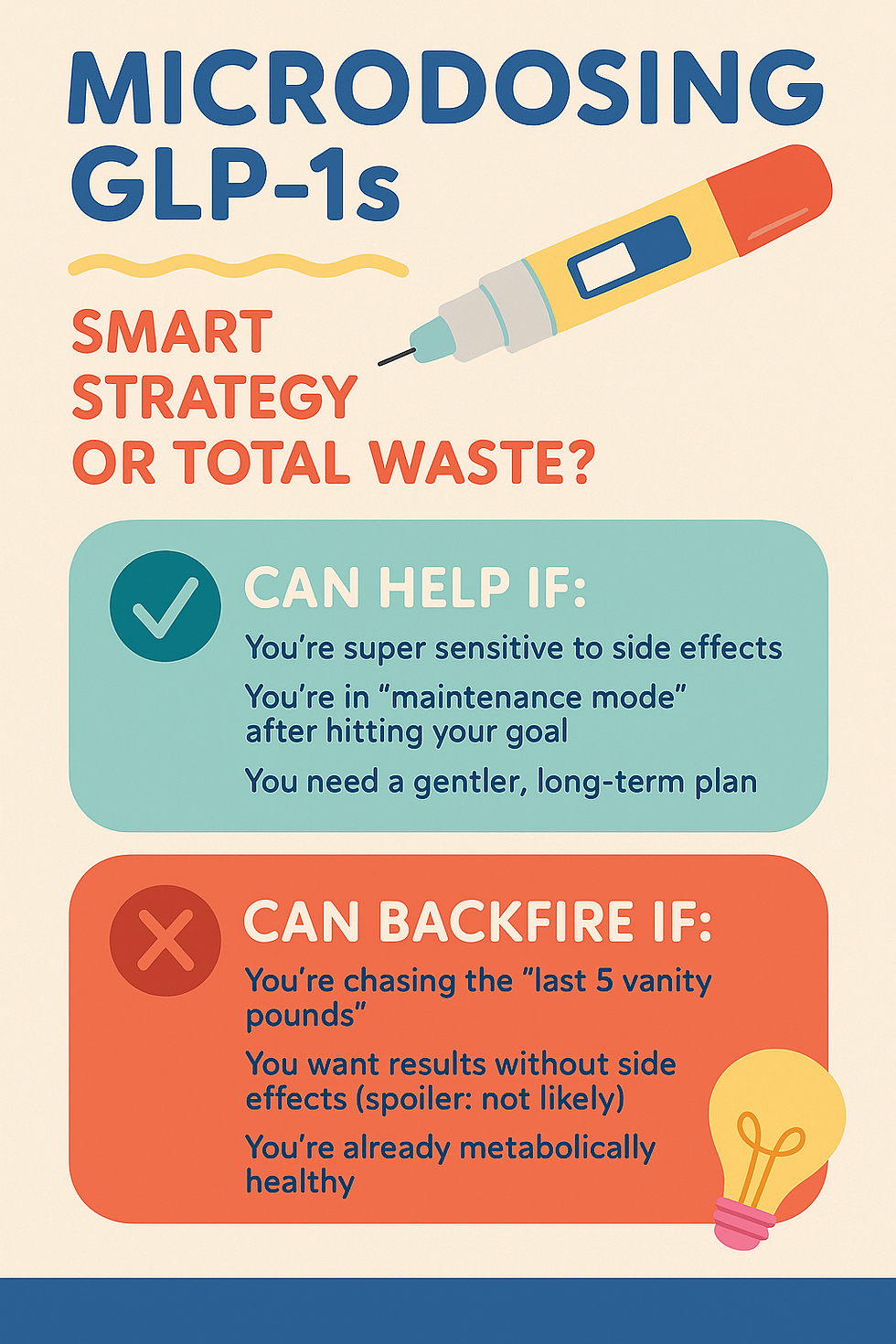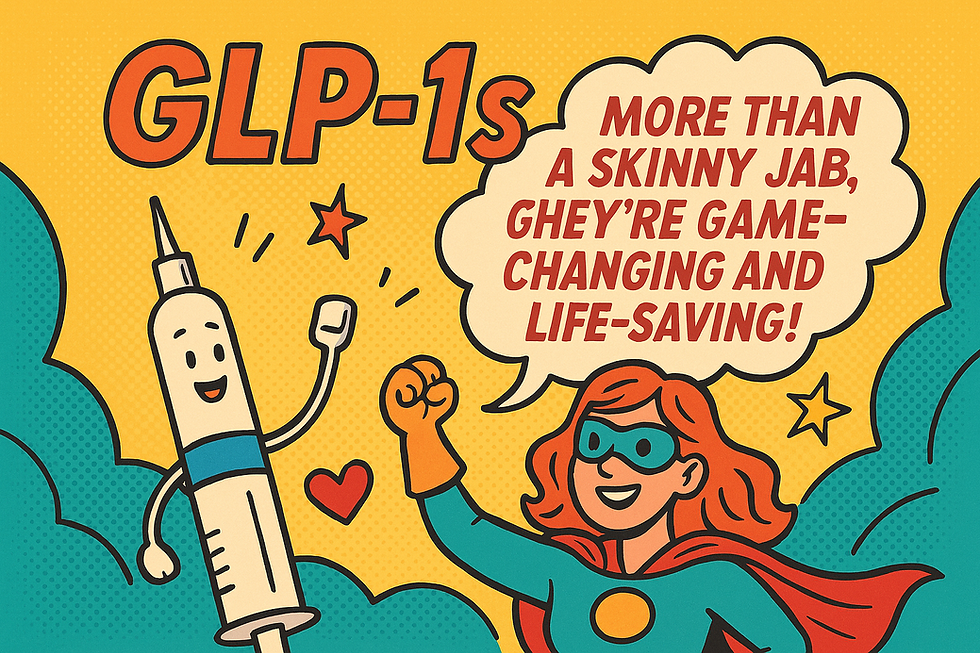Tiny Dose, Big Debate: The Truth About Microdosing GLP-1 Medications
- Julie Brownley, MD, PhD

- Aug 15
- 3 min read

If you’ve been following the conversation around GLP-1 medications — drugs like semaglutide (Ozempic/Wegovy) and tirzepatide (Mounjaro/Zepbound) — you may have heard a new term making the rounds: microdosing.
It sounds trendy and harmless, but in the GLP-1 world, microdosing isn’t about psychedelic wellness retreats — it’s about using a smaller-than-standard dose of these medications, either by starting lower than guidelines recommend or by intentionally maintaining a low dose long term.
So, is microdosing a smart, tailored approach… or a roadblock to your goals? The answer depends entirely on why and how you’re doing it.
What “Microdosing” GLP-1s Means
GLP-1 medications are typically prescribed in a structured titration schedule — starting low, then increasing over weeks to reach a dose proven to produce significant metabolic benefits.Microdosing in this context means:
Starting at a very low dose (e.g., 1/4 or 1/2 of the usual starting dose)
Delaying or avoiding dose increases for longer than standard
Staying at a low maintenance dose rather than progressing to a therapeutic target
When Microdosing Can Be Harmful
For someone whose main goal is to “lose that last 5 pounds” — especially if they’re already near their body’s natural set point — microdosing can be more harmful than helpful:
Minimal benefit: At subtherapeutic doses, you’re unlikely to get the appetite and metabolic regulation needed for sustained fat loss.
Side effects without results: Even small doses can cause nausea, constipation, fatigue, or other side effects — without delivering the intended benefit.
Mindset trap: Chasing perfection with medications can create an unhealthy relationship with your body and with food, and reinforces the myth that “just a little more” weight loss will solve everything.
Metabolic disruption: In some cases, short-term low dosing can lead to appetite changes without meaningful fat loss, which may disrupt normal eating patterns or even trigger rebound weight gain once the medication stops.
If your body is already functioning well metabolically, microdosing to chip away at a few vanity pounds may put you at more risk than reward.
When Microdosing Can Be Helpful
There are situations where a microdose is a wise, strategic choice:
Side effect sensitivity: Some people experience intense nausea, dizziness, or fatigue with standard titration. A microdose can allow your body to adjust gradually without derailing your life.
Maintenance phase: After achieving a healthy, sustainable weight or improving metabolic markers, a low maintenance dose may help preserve benefits without the full appetite suppression of higher doses.
Comorbidities or overlapping treatments: People on multiple medications or with certain GI conditions may tolerate a microdose better while still gaining modest benefits.
Long-term adherence: For some, a microdose provides just enough effect to maintain lifestyle changes, making it more realistic to stay on the medication for the long haul.
The Bottom Line
Microdosing GLP-1s is not a shortcut for quick, minimal weight loss — and if your only goal is to lose those “last few pounds,” the risks can outweigh the benefits. But for people with side effect sensitivities, complex health needs, or a focus on long-term maintenance, a microdose can be a valuable tool in the treatment plan.
Like everything in medicine, the right dose isn’t just about a number — it’s about your biology, your goals, and your quality of life.
💡 Pro tip: If you’re considering a microdose for any reason, work closely with a provider who understands not only the medication, but also your full health picture. The best results come from personalization — not from following trends. The team at Balance360 can provide you with a full risk benefit analysis and help you to plan your plan




Comments